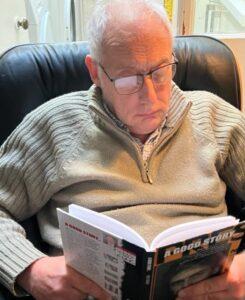- Paper thin - 27th November 2025
- Number blindness - 26th November 2025
- Biased Broadcasting Corporation (BBC) again - 25th November 2025

During 23 years with the BBC, and 41 years in journalism (when he was trained to use simple language, avoiding jargon), for our Editor, Welshman Phil Parry, it has always been central to understand mythological tales as well as the strong grip they exert on minds today, and this is now put centre stage by a new biography of the Brothers Grimm.
They are often used (usually by independence movements) as a rallying cry for supporters.
 Wales, perhaps more than in most countries, has strong links to historical individuals (some mythical, some who actually existed), to prove or disprove a national identity.
Wales, perhaps more than in most countries, has strong links to historical individuals (some mythical, some who actually existed), to prove or disprove a national identity.
Welsh mythology (also commonly known as Y Chwedlau, meaning ‘The Legends’) consists of both folk traditions developed in Wales, and those by the Celtic Britons before the end of the first millennium.

As in most of the predominantly oral societies, Celtic mythology and history were recorded orally by specialists such as Druids (Derwyddon).
This oral record has been lost or altered as a result of outside contact and invasion over the years, but much of this mythology and history are preserved in medieval Welsh manuscripts, which include the Red Book of Hergest, the White Book of Rhydderch, the Book of Aneirin and the Book of Taliesin.
Other works connected to Welsh mythology include the ninth-century Latin historical compilation Historia Brittonum (‘History of the Britons’) and Geoffrey of Monmouth’s twelfth-century Latin chronicle Historia Regum Britanniae (‘History of the Kings of Britain’), as well as later folklore, such as the materials collected in The Welsh Fairy Book by William Jenkyn Thomas (1908).


It is probably little known that King Arthur (as in the ‘knights of the round table’) developed through Welsh mythology, appearing either as a great warrior defending Britain from human and supernatural enemies or as a magical figure.
In Welsh sources, Arthur is portrayed as a leader of the post-Roman Britons in battles against the Anglo-Saxons in the late 5th and early 6th centuries.
 He first appears in two early medieval historical sources, the Annales Cambriae and the Historia Brittonum, but these date to 300 years after he is supposed to have lived.
He first appears in two early medieval historical sources, the Annales Cambriae and the Historia Brittonum, but these date to 300 years after he is supposed to have lived.
His name also occurs in early Welsh poetic sources such as Y Gododdin, and the character is sometimes associated with the Welsh otherworld Annwn.
Owain Glyndẃr (anglicised as Owen Glendower), on the other hand, DID exist – although he has achieved mythical status.

He was a Welsh leader, soldier and military commander in the late Middle Ages, who led a 15-year-long revolt with the aim of ending English rule in Wales.
He was an educated lawyer, forming the first Welsh parliament under his rule, and was the last native-born Welshman to claim the title Prince of Wales.
The spotlight has been thrown on all of this by a new book today about the Brothers Grimm who churned out folk stories kids love in the early 19th century.

They produced their volumes of Children’s and Household Tales between 1812 and 1857.
They wrote 200 stories in it, including ones that everyone will know among them Tom Thumb, Cinderella, Rapunzel and Red Riding Hood.
These were, of course, complete fantasy, but don’t be surprised if they get seized on by nationalist movements.
Others have been…

Details of FACTUAL events covered by Phil, as he was gripped by the rare neurological condition Hereditary Spastic Paraplegia (HSP), have been released in a major book ‘A GOOD STORY’. Order it now!
THE BROTHERS GRIMM: A BIOGRAPHY is by Ann Schmiesing.
Tomorrow – how reports that disgraced Go Compare frontman Wynne Evans has now been dropped from future adverts after making a vile sexual comment, following his disappearance from the airwaves (including from his BBC Radio Wales (RW) show), highlight once more the corporation’s REFUSAL to answer our questions over how many programmes cannot now be transmitted.








